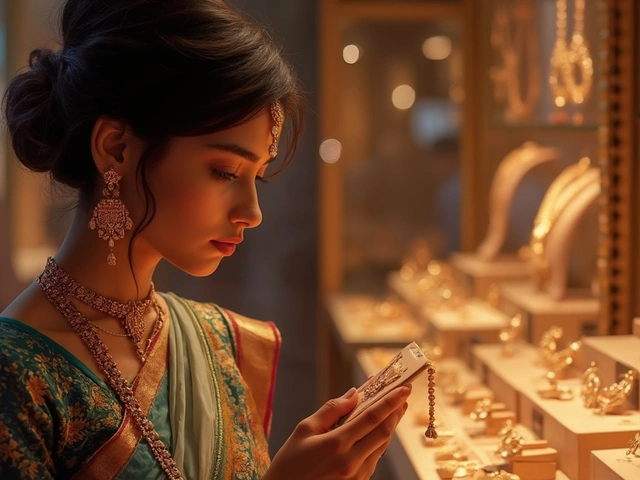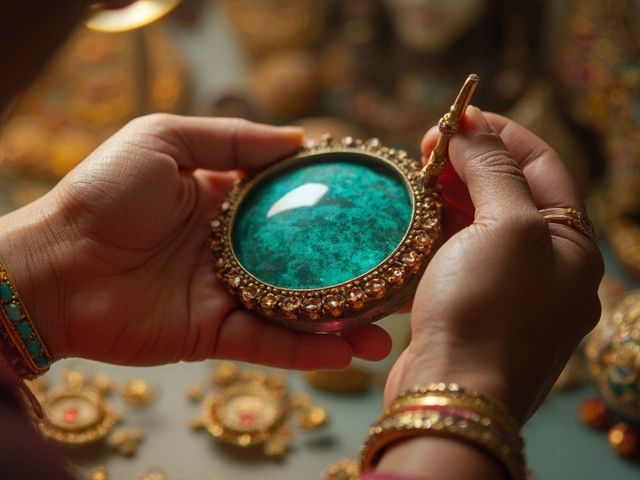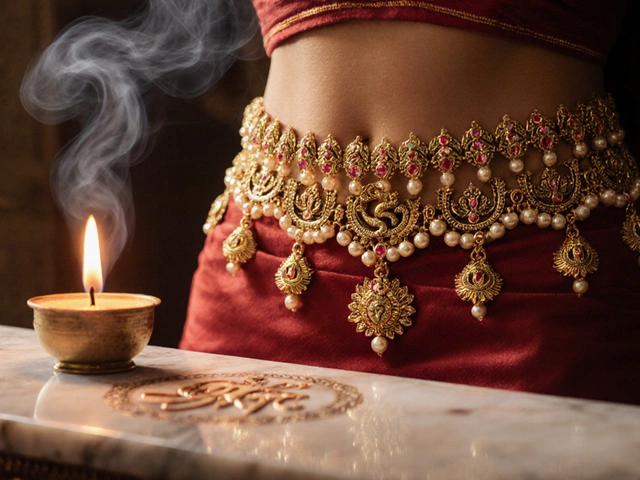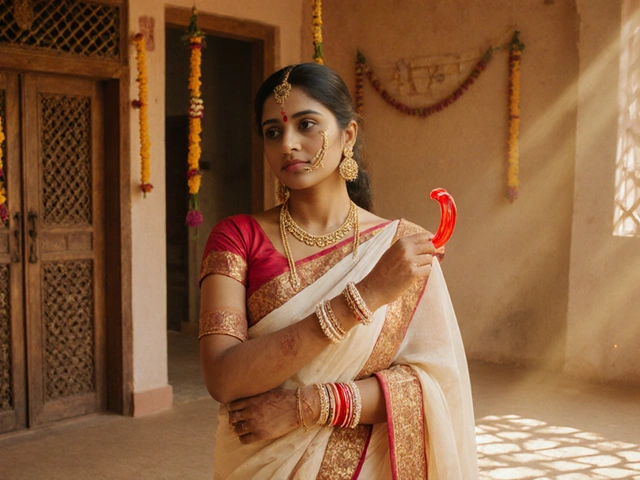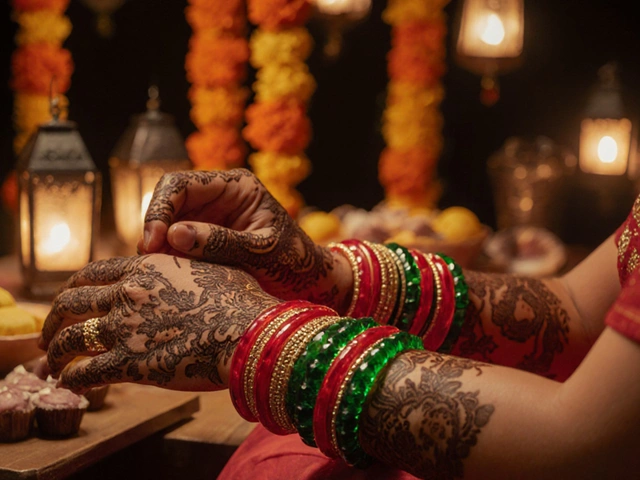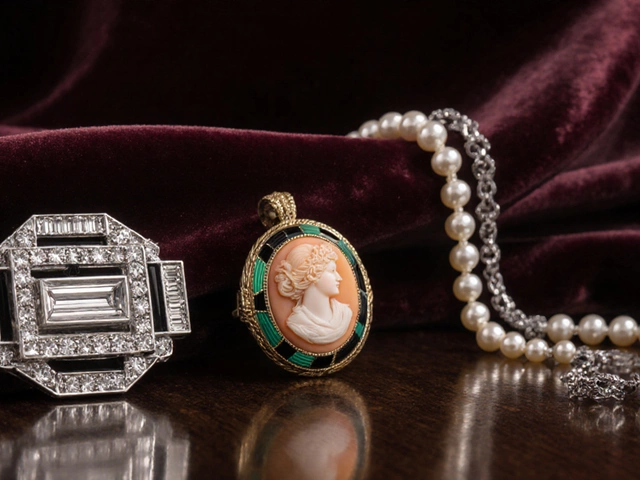
Shiva Gemstone Authenticity Checker
This tool helps you verify if your Shiva-inspired gemstone jewelry meets traditional standards. Based on article insights about authentic temple jewelry and gemstone qualities.
Jewelry Verification Checklist
When you hear the name Lord Shiva gemstone, the mind often drifts to a deep blue sparkle that seems to echo the cosmic river flowing through his third eye. But why does this particular gem dominate stories, temple jewellery, and even modern fashion? Let’s unpack the myth, the meaning, and the practical side of wearing Shiva‑inspired stones.
Quick Takeaways
- Blue sapphire (Neelam) is traditionally regarded as Lord Shiva’s favourite gemstone.
- The stone symbolizes the throat chakra, aiding speech, truth and inner calm.
- In temple jewellery, sapphire appears in pendants, rings and anklets that mimic the divine trident (trishula).
- Authentic Shiva‑themed pieces are often stamped with "Shiva Lingam" or "Neelkanth" motifs.
- When buying, verify cut, clarity and provenance; avoid synthetic imitations unless clearly labeled.
Mythological Roots of Shiva’s Blue Gem
According to the Lord Shiva is a principal deity in Hinduism, known as the destroyer and transformer within the Trimurti. He is often depicted with a crescent moon, a river flowing from his matted hair, and a third eye that burns away illusion. One of the lesser‑known epithets, Neelkanth (the blue‑throated one), stems from the story of the halahala poison that threatened to annihilate the universe during the churning of the ocean (Samudra Manthan). Shiva drank the poison to protect creation, and the blue hue of his throat became a lasting symbol of sacrifice and protection.
Ancient texts such as the Shiva Purana and Skanda Purana mention that the deity favored a deep‑blue stone-today identified as sapphire. The Sanskrit term Neelam (meaning "blue") directly links the gem to Shiva’s own colour palette, reinforcing the belief that wearing the stone aligns the wearer with his calm, detached strength.
Why Blue Sapphire Stands Out
While other gems like ruby (for passion) or pearl (for purity) appear in Shiva‑related art, sapphire carries a unique combination of physical and metaphysical properties:
- Colour symbolism: The dark, midnight blue mirrors the night sky above Mount Kailash, Shiva’s celestial abode.
- Energy work: In Vedic astrology, sapphire governs the planet Saturn, which rules discipline, patience and karmic lessons-traits Shiva embodies.
- Healing claims: Practitioners say sapphire soothes the throat chakra, helping individuals speak their truth without fear.
These factors make sapphire the gem that not only looks right on Shiva statues but also feels right in a devotee’s heart.
Blue Sapphire in Temple Jewellery
Temple jewellery, a style rooted in South Indian temple sculpture, often reproduces divine iconography in gold, silver and precious stones. When you spot a sapphire set within a pendant shaped like a Blue Sapphire is a hard, durable gemstone that ranks 9 on the Mohs scale. Its deep hue and natural clarity make it ideal for intricate, high‑relief settings typical of temple pieces., you’re looking at a direct nod to Shiva’s favorite jewel.
Typical motifs include:
- Trishula (trident): The centre sapphire rests at the intersection, echoing Shiva’s weapon.
- Shiva Lingam: A stone‑set lingam often incorporates a small sapphire at its base, symbolising the cosmic energy he represents.
- Damru (drum): Tiny sapphires are set into the drum’s surface, capturing the rhythm of creation.
Artisans usually embed the gem in 22‑carat gold, a metal considered pure in Hindu rituals. The resulting pieces are not only decorative but also acceptable for worship (prasada) and worn during festivals like Maha Shivaratri.
Choosing Authentic Shiva‑Inspired Gemstone Jewellery
If you decide to purchase a sapphire‑laden necklace or ring, follow these practical steps to avoid cheap imitations:
- Check the cut and clarity: Authentic Indian sapphires display a deep, uniform colour without visible inclusions. A high‑grade cut will reflect a luminous sparkle.
- Verify certifications: Reputable dealers provide a Gemological Institute of America (GIA) or Indian Gem & Jewellery Council (IGJC) report.
- Look for traditional hallmarks: Many temple pieces are stamped with "Shiva" or "Neelkanth" in Devanagari script, indicating they were crafted for devotional use.
- Assess the metal: Gold should be 22‑carat (916) and bear a hallmark of the issuing hall (e.g., "22K 916"), ensuring it meets Indian purity standards.
- Consider the source: Sapphires from Kashmir, Sri Lanka (Ceylon) and Burma (Myanmar) are historically linked to Hindu jewellery; they tend to have a richer hue.
Finally, trust your intuition-if a piece feels too light or the colour looks artificially enhanced, walk away. The divine connection is meant to be felt, not forced.
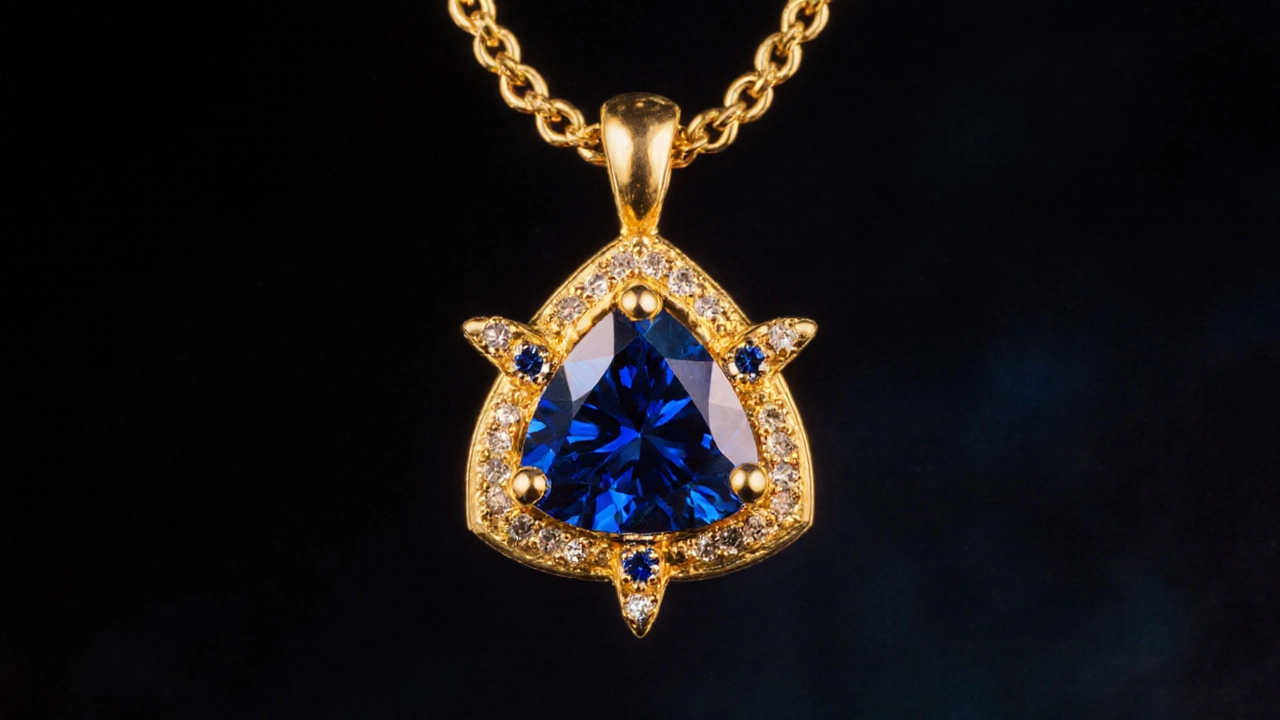
Common Misconceptions About Shiva’s Gem
There are a few myths that keep popping up on forums and social media:
- "Only blue sapphires work for Shiva" - While blue is the traditional colour, some regional stories mention emeralds (for the forest aspect of Shiva as Bhairava). However, the overwhelming consensus in scriptures points to sapphire.
- "Synthetic sapphire loses its power" - From a spiritual perspective, intention matters more than crystal lattice. Many devotees wear lab‑grown sapphires and report the same sense of calm.
- "You must wear the gem on a specific finger" - Traditional guidelines suggest the ring finger of the right hand for men and the left hand for women, but the most important factor is personal devotion.
Understanding the nuance helps you respect the tradition without getting tangled in unnecessary rules.
How Shiva’s Gem Influences Modern Design
Contemporary Indian designers blend ancient symbolism with runway trends. You’ll find sapphire‑accented bangles that mimic the swirl of Shiva’s matted hair, or minimalist pendants that carry a single blue stone with a tiny trishula charm. These pieces appeal to both devout worshippers and fashion‑forward shoppers who appreciate the story behind the sparkle.
Because sapphire is durable, it survives daily wear, making it a practical choice for everyday jewellery that still carries spiritual weight. Brands that source responsibly often tout certifications like "Fair Trade" and "Conflict‑Free" to assure buyers that the stone’s journey aligns with the ethical principles Shiva embodies.
Key Takeaways for the Curious Shopper
- Blue sapphire (Neelam) is the gemstone most closely linked to Lord Shiva.
- The stone’s colour, astrological link to Saturn, and throat‑chakra benefits all echo Shiva’s attributes.
- Temple jewellery incorporates sapphire in motifs such as the trishula, lingam and damru.
- When buying, verify cut, clarity, certifications, hallmarks and metal purity.
- Both natural and lab‑grown sapphires can serve as genuine devotional pieces if chosen with intention.
Why is blue sapphire called “Neelam” in Hindu tradition?
“Neelam” simply means “blue” in Sanskrit. The deep blue hue mirrors Shiva’s nickname Neelkanth (blue‑throated) and the night sky over his mountain abode, Kailash. This colour connection reinforces the belief that the gem embodies his calm, protective energy.
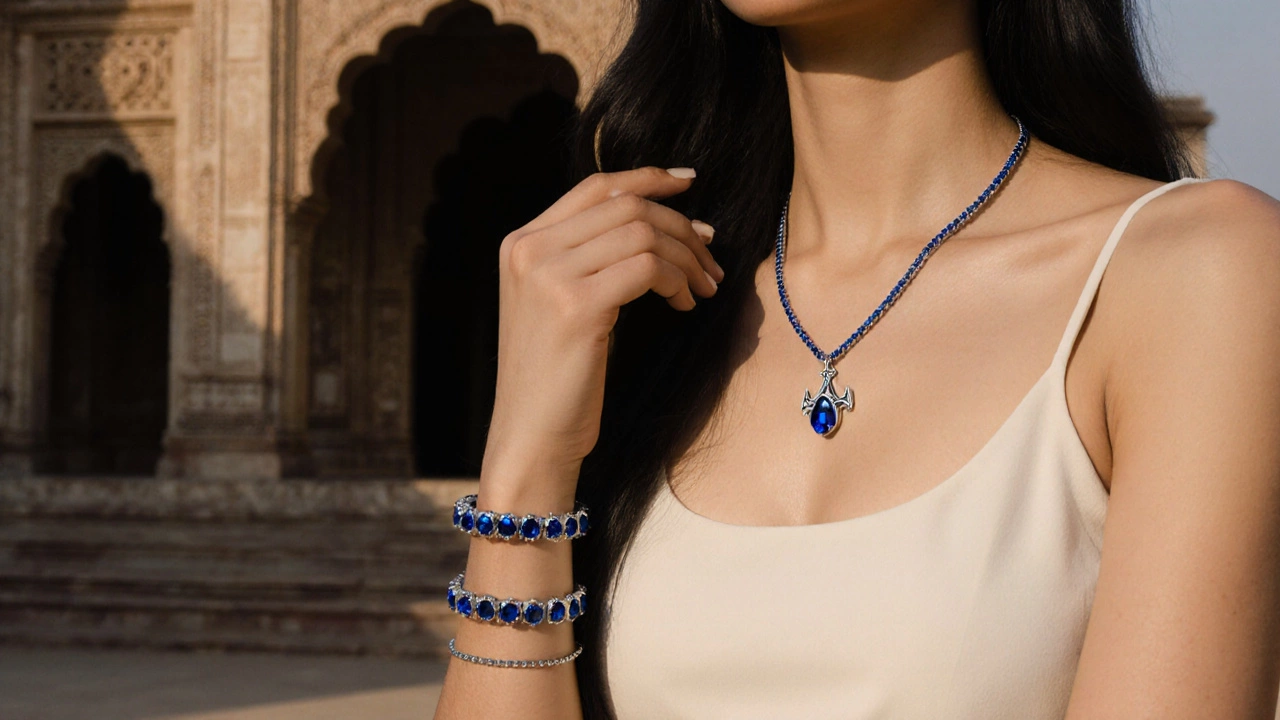
Can synthetic sapphire be used in temple jewellery?
Yes. From a devotional standpoint, intention matters more than the stone’s origin. Many modern workshops use lab‑grown sapphires because they are ethically sourced and cost‑effective, yet still carry the same visual impact.
What other gemstones appear in Shiva‑related art?
Ruby (for his fiery aspect as Bhairava), pearl (symbolising purity), and occasionally emerald (linking to his forest wanderer avatar) are seen. However, sapphire remains the most celebrated stone in texts and temple jewellery.
How do I verify the purity of gold in a Shiva pendant?
Look for a 22‑carat (916) hallmark stamped in Devanagari or Roman numerals. Reputable jewelers also provide an assay certificate that confirms the gold’s fineness.
Is there a specific finger to wear a Shiva sapphire ring?
Traditional guides suggest the right‑hand ring finger for men and the left‑hand ring finger for women, but the most important factor is devotional intent. Wear it where it feels most meaningful to you.
Comparison of Popular Stones in Shiva‑Themed Jewellery
| Gemstone | Primary Colour | Mythological Symbolism | Common Jewellery Use |
|---|---|---|---|
| Blue Sapphire (Neelam) | Deep blue | Represents Neelkanth, Saturn’s discipline, throat‑chakra clarity | Pendants, trishula settings, lingam‑incorporated rings |
| Ruby (Manik) | Vibrant red | Embodies Bhairava’s fierce aspect, passion and protection | Ring stones for warriors, decorative motifs on Nandi statues |
| Pearl (Moti) | Off‑white/cream | Symbolises purity, linked to Shiva’s role as the ultimate ascetic | Necklaces for puja, temple earrings |
| Emerald (Panna) | Rich green | Connected to Shiva’s forest wanderer form, nature’s vitality | Occasional anklets, subtle accent stones in temple bracelets |
Whether you’re a collector, a devotee, or simply love the striking look of a blue stone, understanding the story behind Shiva’s favourite gem helps you choose jewellery that feels both beautiful and meaningful.

